Toy trains from the past 200 years
- Published
What is it about toy trains that has continued to entertain children, admittedly mostly boys, for nearly two centuries? A major new exhibition is about to find out.
They ran to your own personal timetable. Engineering work at weekends was rare. And there were never leaves on the line, just the occasional bit of fluff from the living room carpet.
For decades, toy trains have enthralled generations of youngsters - and this coming March the National Railway Museum, in York, looks into why children love them so much, in its exhibition Playing Trains, external.
Despite disappearing from regular UK rail services 50 years ago, the draw of steam endures.
Whether it's the noise, the speed, the bright colours and shiny liveries - or, as in the case of the Thomas the Tank Engine series, the humanisation of the machines - locomotives from the past still attract new young admirers.
Ahead of the exhibition, the NRM wants to find out about people's favourite childhood railway memories - to help discover the greatest train toys of all time.
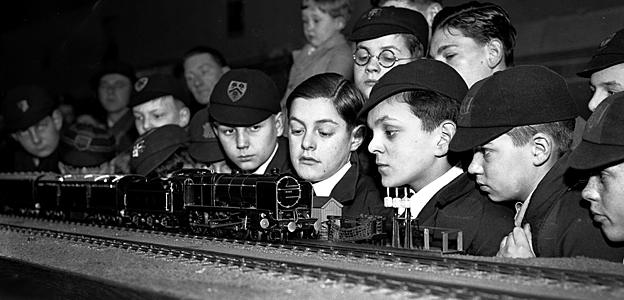
The Hornby train set below dates from the 1920s.
At the time the Hornby brand was made by Meccano - which specialised in engineering-style toys - in its Binns Road factory in Liverpool.
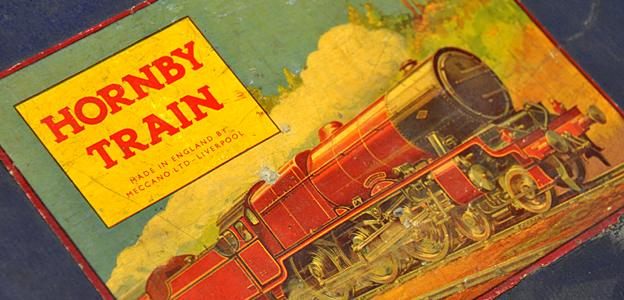
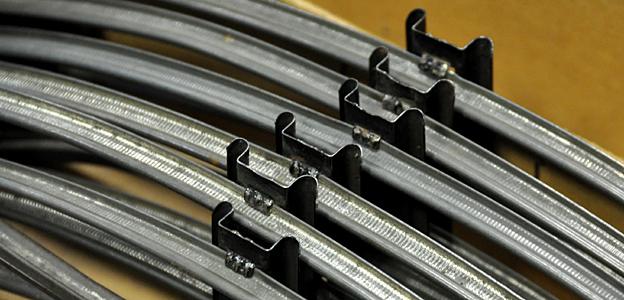
The box contained a circle of track and a tin lithographed clockwork-operated model.
It was based loosely on a London, Midland and Scottish (LMS) freight locomotive and wagons from the time.
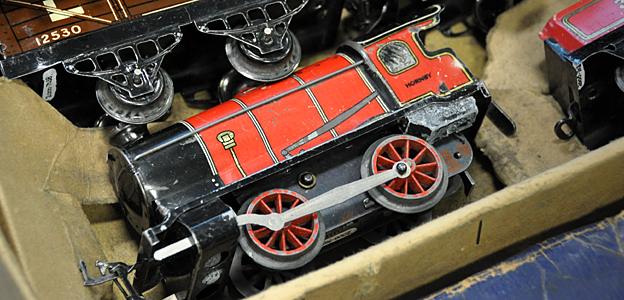

And from the mid 1930s, shoppers crowd around a display of Meccano-made trains in Whiteley's department store in Bayswater, London.
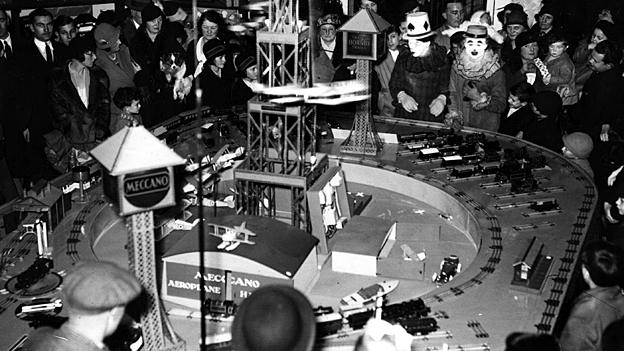
Although a pioneer of steam travel, the UK was not as quick as other countries to cash in on mass toy train production.
In continental Europe and the USA firms developed skills creating dies and moulds - making cast-iron products in bulk.
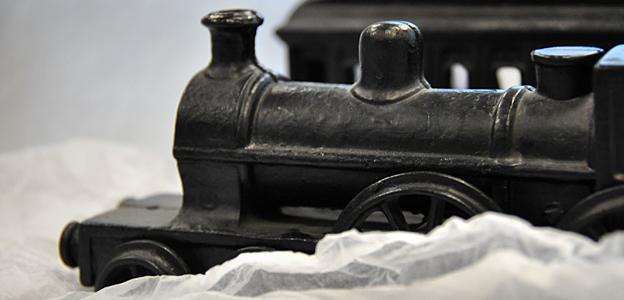

This matt black locomotive, carriage and tender were made by Manchester firm Henry Wallwork and Company.
It was possibly a commission from one of America's biggest toymakers of the time - the Ives Manufacturing Company of Bridgeport, Connecticut.
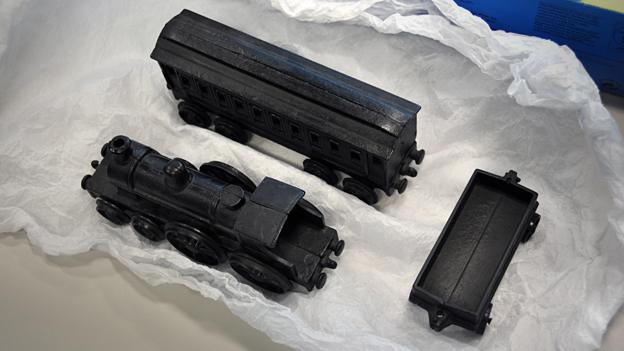
It was what is known as a "floor train", intended to be pushed along.
Very few of these examples have survived, as the toys became brittle and broke easily if dropped.
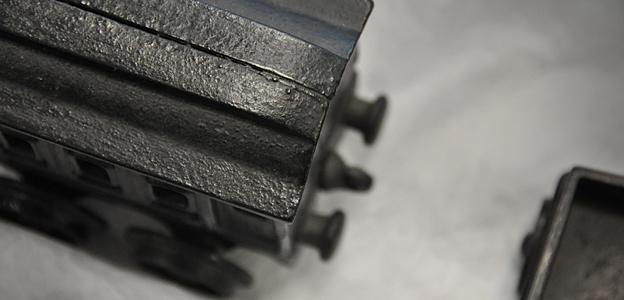
The images below are of a "peep show"' showing the "Moorish Arch" constructed in the mid 19th Century near Edge Hill Junction in Liverpool - on the line from Manchester.
The scene was repeated on a range of commemorative items at the time - including cups, jugs and medallions.
It could have been played with by a child, but is likely to have been used to entertain adults.
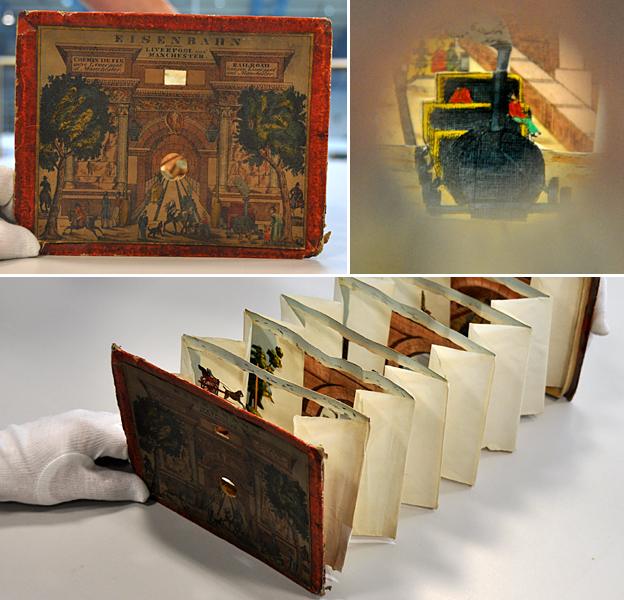
With its rich history - the NRM has about 10,000 model trains and toys in its collections - the museum hopes to tap into the essence of why children continue to be excited by railways.
The photos below may come from two Christmas mornings more than 60 years ago, but the train games continue today.
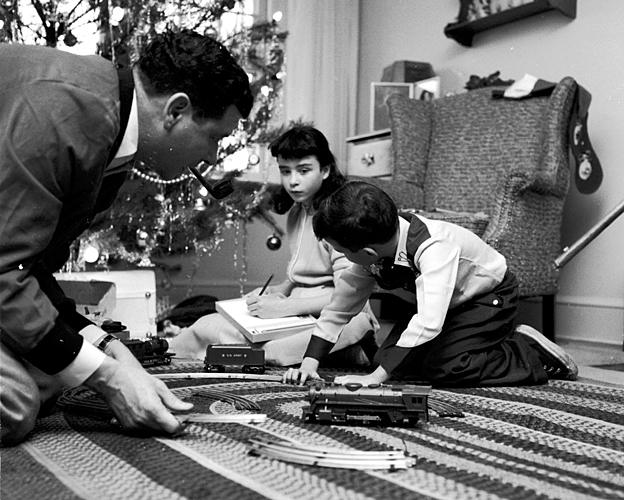
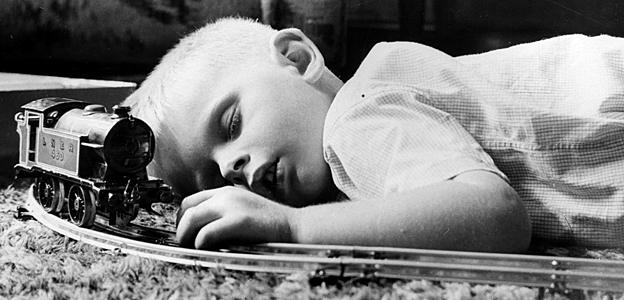

Playing Trains opens at the National Railway Museum, York, from 20 March to 4 Sept 2015.
All images subject to copyright. Additional material from Getty Images.
Music in photofilm from EMI Production Music.